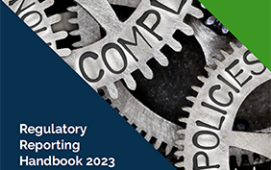Summer – such as it exists here in London – is typically characterised by a slowdown in activity in our marketplace. But we are bracing ourselves for a busy season as the world ponders just how the legal entity identifier (LEI) will look – and how to deal with it once it emerges.
The pace of pronouncements – from the Financial Stability Board (FSB), from Sifma and just last week from Cusip and the national numbering associations – shows no sign of abating. The smart money seems to be shifting weekly, from the DTCC/Sifma ‘centralised’ solution, to the FSB’s ‘decentralised’ solution and on to Cusip’s suggestion of a ‘hybrid centralised/decentralised’ solution.
Whatever next?
We have been watching these developments – and the concurrent discussion of whether the LEI should be a random number or should contain some intelligence to make it more useful and manageable – with keen interest. It’s high time, we concluded, that we published a special report on the topic.
And it will become so.
We are in the process of pulling together expert opinion from the marketplace for a special report we’ll publish in September. Our planned report – What the Global Legal Entity Identifier (LEI) Will Mean for Your Firm – will hopefully do what it says on the tin. We’ll be running a webinar/webcast soon after publication as well, to present the key findings and host a broader, live discussion of the topics raised in the report. And if the market calls for it, we’ll think about doing a seminar on the subject.
As you know, expectations for the LEI are high. The industry initiative to develop and promote a standard global legal entity identifier (LEI) is aimed at significantly reducing the opacity associated with complex financial instruments. The lack of clarity around the issuing entities of certain risky securities was widely acknowledged to be a major contributing factor in the 2008 credit crisis.
Practitioners have welcomed the development of the LEI in terms of reduced risk and elimination of duplication of effort across the industry. But many acknowledge that adopting the new identifier will bring a new set of challenges as firms seek to strike a balance between their internal processes and the use of external suppliers’ services.
Our industry briefing will look at the implications of the emerging LEI for financial institutions as they address how to implement the new standard, and offer suggestions on best practices as the LEI becomes available.
If you’re interested in getting involved, get in touch.
Subscribe to our newsletter




